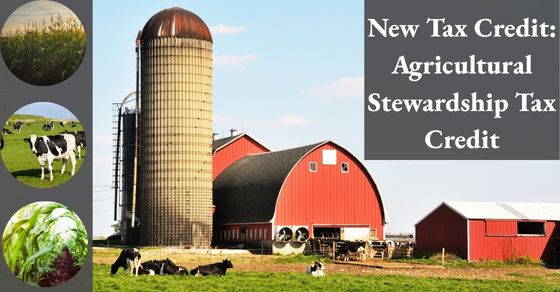 In 2024, Colorado passed a landmark law aimed at rewarding farmers and ranchers who adopt practices that enhance soil health, conserve water, and promote ecosystem resilience. The Agricultural Stewardship Tax Credit (ASTC), created via HB24-1249, is designed to provide meaningful financial incentives for on-the-ground stewardship across the state.
In 2024, Colorado passed a landmark law aimed at rewarding farmers and ranchers who adopt practices that enhance soil health, conserve water, and promote ecosystem resilience. The Agricultural Stewardship Tax Credit (ASTC), created via HB24-1249, is designed to provide meaningful financial incentives for on-the-ground stewardship across the state.
Below is a breakdown of what the program offers, how it works, and tips for producers interested in applying.
What is the Agricultural Stewardship Tax Credit (ASTC)?
The ASTC is a refundable Colorado state income tax credit that rewards qualified agricultural producers for implementing certain “stewardship practices” on their land. Because it is refundable, you may receive a tax rebate if your credit exceeds your tax liability.
The credit is intended to encourage practices that:
• Increase soil health
• Improve water efficiency
• Foster more biodiverse and resilient ecosystems
• Do so while maintaining productivity of the farm or ranch
Importantly, the credit cannot be used for the same practice on the same acreage if that practice already receives funding from another grant or tax incentive.
How Much Credit Can You Receive?
The amount of credit depends on how many qualified practices you adopt and the acreage on which they are applied. The program uses a tiered per-acre system:
Number of Practices Credit per Acre Maximum Credit (per year)
1 stewardship practice up to $75 per acre $150,000
2 stewardship practices up to $100 per acre $200,000
3 or more practices up to $150 per acre $300,000
So, for example, if you implement three or more qualified stewardship practices across, say, 1,500 acres, you might qualify for up to 1,500 × $150 = $225,000 in credit (assuming your operation meets other eligibility requirements).
However, there are program caps and constraints at the state level:
• The aggregate amount of credits that can be issued per calendar year is capped at $3 million.
• If total approved credits exceed this cap, excess applications may go on a waitlist.
• Only one tax credit certificate can be issued to a qualified taxpayer per income tax year.
• A given taxpayer may only receive the credit for up to three income tax years.
• The credit is only available for income tax years beginning on or after January 1, 2026, and before January 1, 2031.
What Counts as a “Qualified Stewardship Practice”?
The term “qualified stewardship practice” is defined by statute and further refined through rulemaking by the Colorado Department of Agriculture (CDA).
According to the proposed rules (8 CCR 1206-5) and legislative summaries, there are multiple eligible practices, including:
• Rotational grazing
• Reduced tillage or no-till methods
• Cover cropping
• Compost application
• Integrating managed livestock grazing into cropland
• Range improvements
• Interseeding
• Other supplemental or perennial practices that enhance soil, water, or ecosystem health
Note: Practices must be documented and implemented in accordance with rules adopted by CDA.
Application Process & Timeline
Here’s how a producer can claim the credit:
1. Application opens via the Colorado Department of Agriculture. The ASTC web page will provide forms and instructions.
2. CDA reviews the application and issues a Tax Credit Certificate if you qualify.
3. You attach the certificate to your state income tax return, filed with the Colorado Department of Revenue.
4. If the requested credits for all applicants exceed the $3 million cap in a given year, CDA will place excess claims on a waitlist, and those may be issued in subsequent tax years.
The application window opens November 2025. Producers should watch the CDA webpage for the formal announcement and deadlines.
CDA is also holding informational webinars in advance of the application window.
Learn more or sign up for updates at the Colorado Department of Agriculture’s Agricultural Stewardship Tax Credit webpage, https://ag.colorado.gov/ag-stewardship-tax.
In addition to original content written by DWC professionals, DWC CPAs and Advisors may use content management systems, including AI-assisted technology, to help with edited style and written compositions.
This article was written with the assistance of AI tools.



